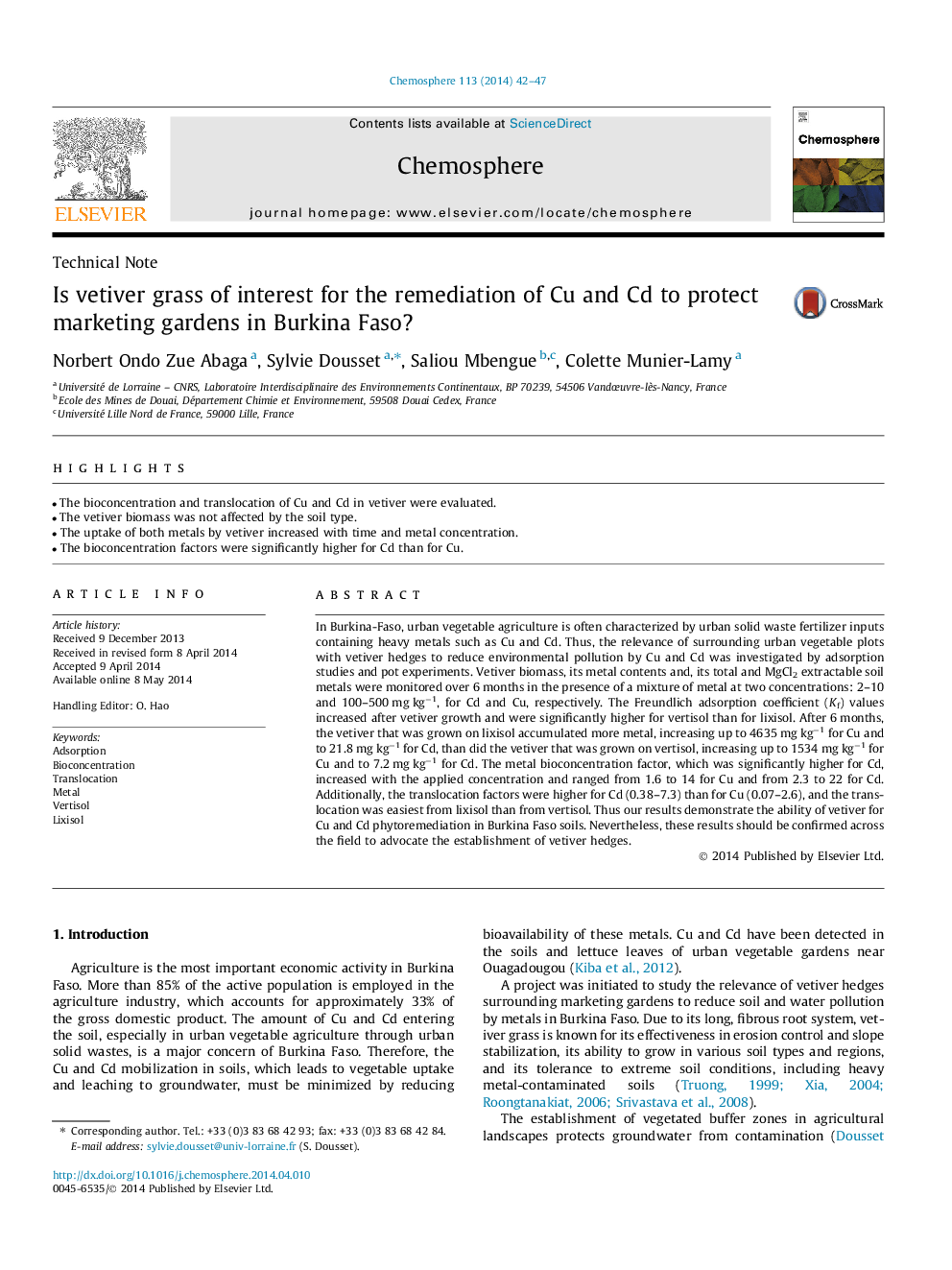| Article ID | Journal | Published Year | Pages | File Type |
|---|---|---|---|---|
| 4408766 | Chemosphere | 2014 | 6 Pages |
•The bioconcentration and translocation of Cu and Cd in vetiver were evaluated.•The vetiver biomass was not affected by the soil type.•The uptake of both metals by vetiver increased with time and metal concentration.•The bioconcentration factors were significantly higher for Cd than for Cu.
In Burkina-Faso, urban vegetable agriculture is often characterized by urban solid waste fertilizer inputs containing heavy metals such as Cu and Cd. Thus, the relevance of surrounding urban vegetable plots with vetiver hedges to reduce environmental pollution by Cu and Cd was investigated by adsorption studies and pot experiments. Vetiver biomass, its metal contents and, its total and MgCl2 extractable soil metals were monitored over 6 months in the presence of a mixture of metal at two concentrations: 2–10 and 100–500 mg kg−1, for Cd and Cu, respectively. The Freundlich adsorption coefficient (Kf) values increased after vetiver growth and were significantly higher for vertisol than for lixisol. After 6 months, the vetiver that was grown on lixisol accumulated more metal, increasing up to 4635 mg kg−1 for Cu and to 21.8 mg kg−1 for Cd, than did the vetiver that was grown on vertisol, increasing up to 1534 mg kg−1 for Cu and to 7.2 mg kg−1 for Cd. The metal bioconcentration factor, which was significantly higher for Cd, increased with the applied concentration and ranged from 1.6 to 14 for Cu and from 2.3 to 22 for Cd. Additionally, the translocation factors were higher for Cd (0.38–7.3) than for Cu (0.07–2.6), and the translocation was easiest from lixisol than from vertisol. Thus our results demonstrate the ability of vetiver for Cu and Cd phytoremediation in Burkina Faso soils. Nevertheless, these results should be confirmed across the field to advocate the establishment of vetiver hedges.
